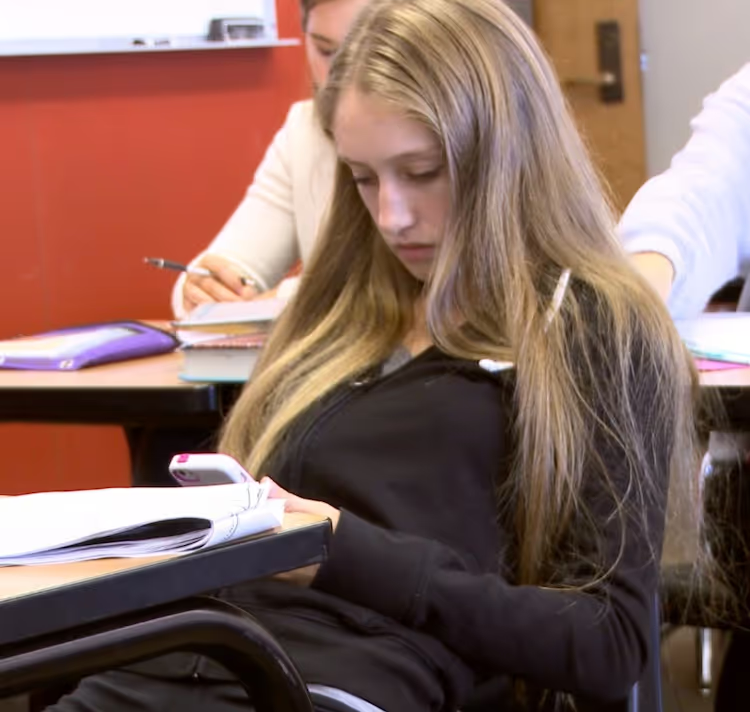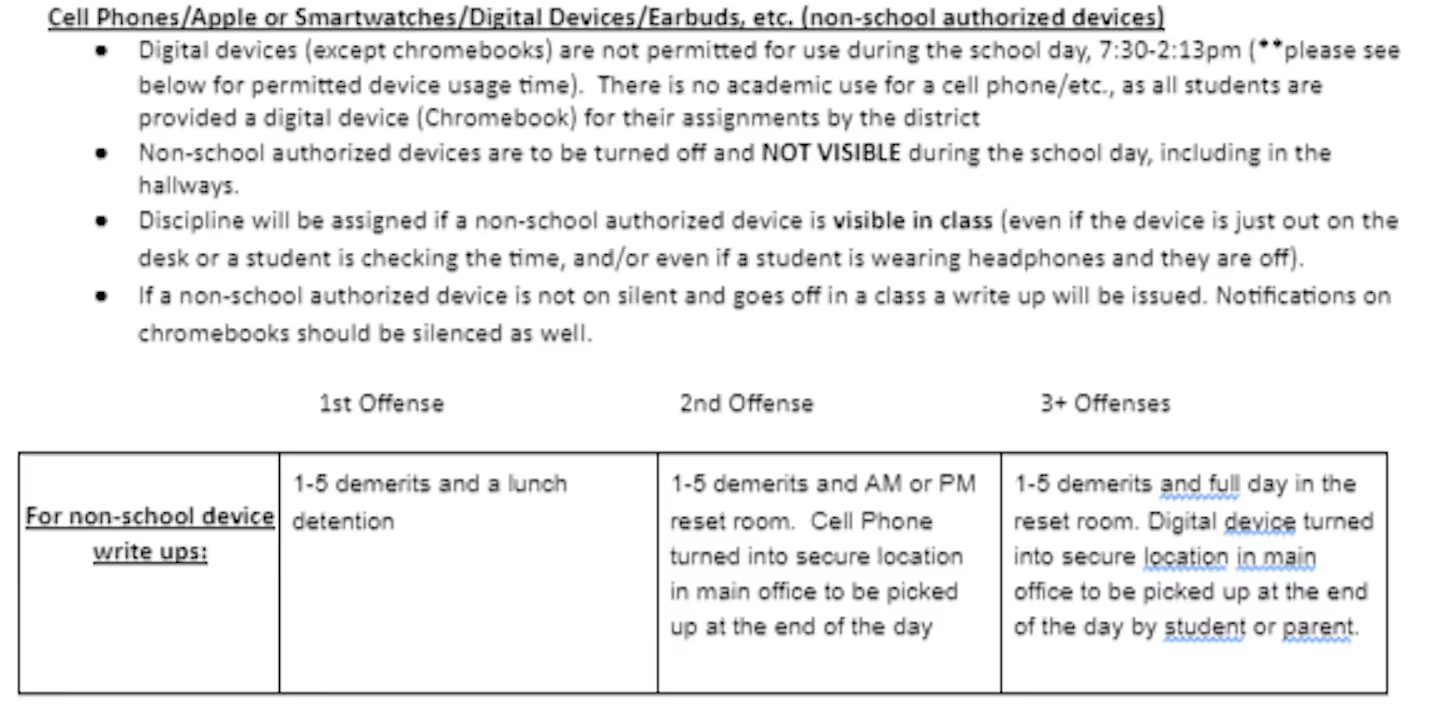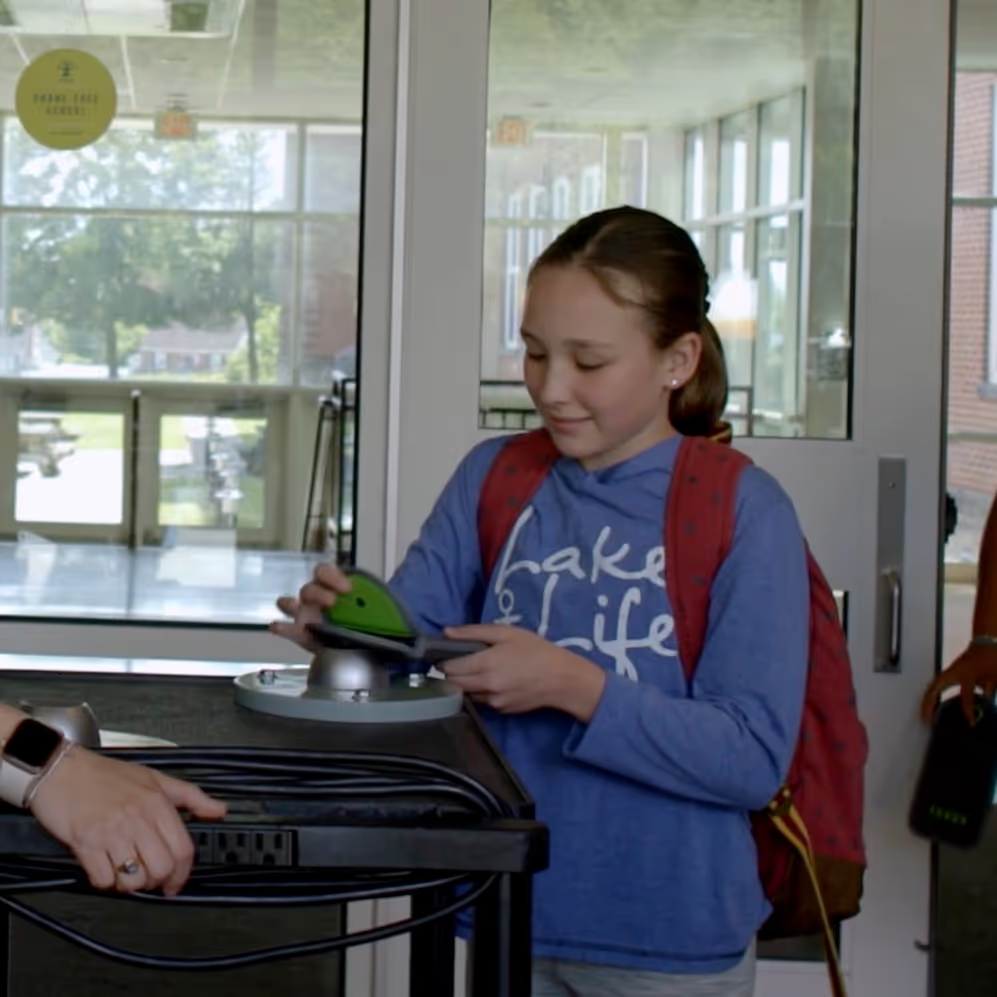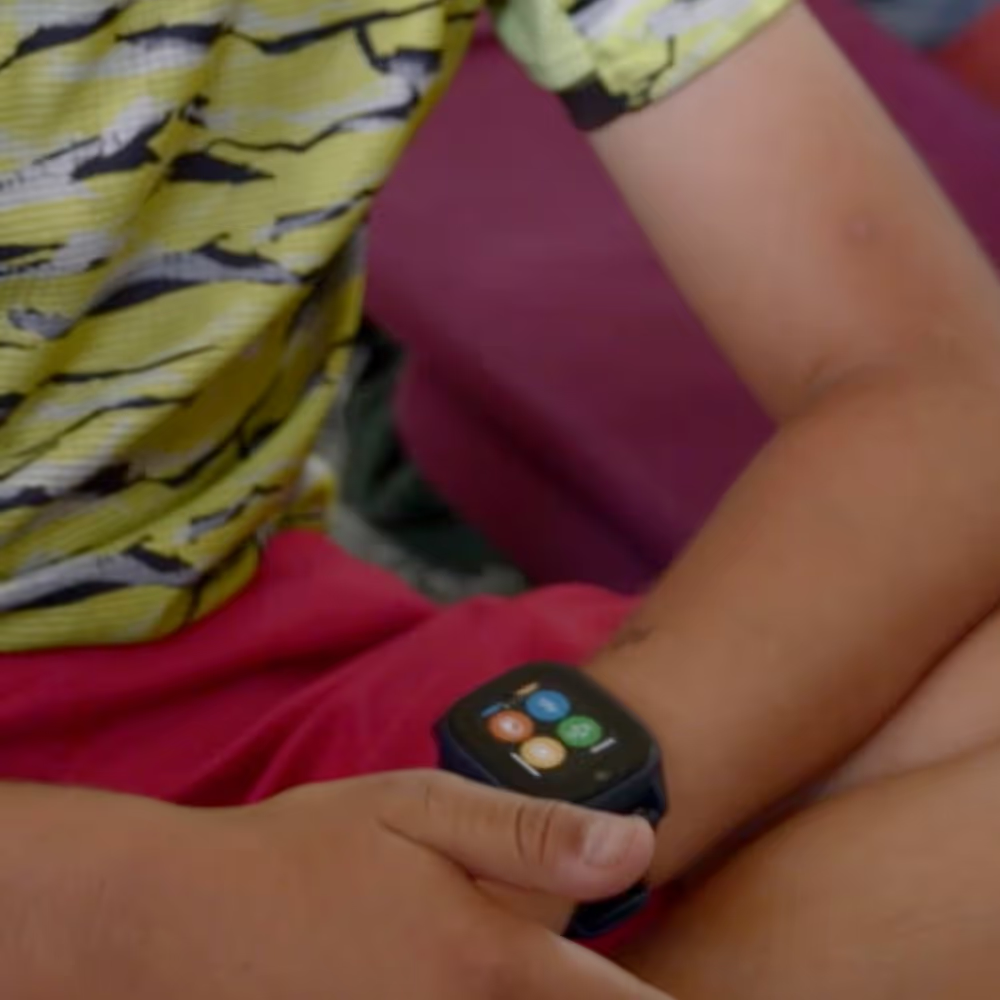


“We couldn't have anticipated that ‘Away for the Day’ would go as great as it has to start this school year.”
School Administrator, the monthly magazine of AASA, The School Superintendents Association. is running a feature article this month that I wrote about implementing Away For The Day cellphone policies, where I share several stories from school administrators. Recently I received a wonderful email from Adam Slusher, vice principal at Pennsville Middle School in New Jersey, who did a thoughtful rollout of Away For The Day, using many of the free resources we’ve put together to help people through the process.
What I think is great about the letter is that it maps out in great detail the rules they created as well as details on how they implemented Away For The Day. The school did a lot of leg work with families before the school year started, but that said, we know of schools that changed to Away For The Day after winter break.
“I wanted to give you an update on how things are going here at Pennsville Middle. Since July, we began communicating with parents that we were moving to an "Away For The Day" policy regarding smart devices. In our messages, we encouraged parents to have conversations with their children 6 weeks ahead of school to prepare them for going deviceless from 7:35 - 2:13. We continued (probably annoyingly) sending messages throughout August reminding parents how we were going to handle smartphones much differently this year.
At our Board of Ed meeting in August, we adopted the policy below and communicated to parents that we would be taking devices away if they interfere with learning.
Learn more about showing our movies in your school or community!
Join Screenagers filmmaker Delaney Ruston MD for our latest Podcast

Learn more about our Screen-Free Sleep campaign at the website!
Our movie made for parents and educators of younger kids
Learn more about showing our movies in your school or community!

Learn more about showing our movies in your school or community!
Join Screenagers filmmaker Delaney Ruston MD for our latest Podcast

Learn more about our Screen-Free Sleep campaign at the website!
Our movie made for parents and educators of younger kids
Join Screenagers filmmaker Delaney Ruston MD for our latest Podcast
We also presented to the entire student body on the first day of school our philosophy, why we're moving in this direction, and what the consequences would be if instructional minutes were interfered with.
I have cc'd our Principal Carolyn Carels on this email because she would likely echo the same thing that I am about to say. We couldn't have anticipated that Away For The Day would go as great as it has to start this school year. The amount of devices that we saw last year in the hallways, classrooms, and cafeteria (which we allowed) was exorbitant. Teachers only wrote up the most egregious violations of our cell phone policy - and it slowly spiraled out of control as the year went on.
…Students have been very cooperative, and I think they understand the why of what we're doing. We can't tell you how much we've been thanked by staff - this school year has just had a completely different positive feel to it.
Yesterday after our State testing, we took time in the afternoon to show Screenagers to the entire student body and have teachers facilitate discussions with students. …
…I also wanted to thank you [ Delaney and Screenagers team] for all the work you have done compiling research and highlighting other districts and schools that are moving in the same direction. It made it easy for us to communicate our rationale with parents, district administration, and the Board of Ed. It seems like every time we look at the news now, we see another district moving in this direction because of how distracted this generation is.
This is one of the bigger "teachable moments" of our careers so far because adults are learning how to manage this right along with our students. Thanks again for all your hard work and we will continually try to keep you updated!
—Adam J. Slusher, Ed.D
Vice Principal - Pennsville Middle School"
As we’re about to celebrate 10 years of Screenagers, we want to hear what’s been most helpful and what you’d like to see next.
Please click here to share your thoughts with us in our community survey. It only takes 5–10 minutes, and everyone who completes it will be entered to win one of five $50 Amazon vouchers.
“We couldn't have anticipated that ‘Away for the Day’ would go as great as it has to start this school year.”
School Administrator, the monthly magazine of AASA, The School Superintendents Association. is running a feature article this month that I wrote about implementing Away For The Day cellphone policies, where I share several stories from school administrators. Recently I received a wonderful email from Adam Slusher, vice principal at Pennsville Middle School in New Jersey, who did a thoughtful rollout of Away For The Day, using many of the free resources we’ve put together to help people through the process.
What I think is great about the letter is that it maps out in great detail the rules they created as well as details on how they implemented Away For The Day. The school did a lot of leg work with families before the school year started, but that said, we know of schools that changed to Away For The Day after winter break.
“I wanted to give you an update on how things are going here at Pennsville Middle. Since July, we began communicating with parents that we were moving to an "Away For The Day" policy regarding smart devices. In our messages, we encouraged parents to have conversations with their children 6 weeks ahead of school to prepare them for going deviceless from 7:35 - 2:13. We continued (probably annoyingly) sending messages throughout August reminding parents how we were going to handle smartphones much differently this year.
At our Board of Ed meeting in August, we adopted the policy below and communicated to parents that we would be taking devices away if they interfere with learning.

We also presented to the entire student body on the first day of school our philosophy, why we're moving in this direction, and what the consequences would be if instructional minutes were interfered with.
I have cc'd our Principal Carolyn Carels on this email because she would likely echo the same thing that I am about to say. We couldn't have anticipated that Away For The Day would go as great as it has to start this school year. The amount of devices that we saw last year in the hallways, classrooms, and cafeteria (which we allowed) was exorbitant. Teachers only wrote up the most egregious violations of our cell phone policy - and it slowly spiraled out of control as the year went on.
…Students have been very cooperative, and I think they understand the why of what we're doing. We can't tell you how much we've been thanked by staff - this school year has just had a completely different positive feel to it.
Yesterday after our State testing, we took time in the afternoon to show Screenagers to the entire student body and have teachers facilitate discussions with students. …
…I also wanted to thank you [ Delaney and Screenagers team] for all the work you have done compiling research and highlighting other districts and schools that are moving in the same direction. It made it easy for us to communicate our rationale with parents, district administration, and the Board of Ed. It seems like every time we look at the news now, we see another district moving in this direction because of how distracted this generation is.
This is one of the bigger "teachable moments" of our careers so far because adults are learning how to manage this right along with our students. Thanks again for all your hard work and we will continually try to keep you updated!
—Adam J. Slusher, Ed.D
Vice Principal - Pennsville Middle School"
Sign up here to receive the weekly Tech Talk Tuesdays newsletter from Screenagers filmmaker Delaney Ruston MD.
We respect your privacy.
“We couldn't have anticipated that ‘Away for the Day’ would go as great as it has to start this school year.”
School Administrator, the monthly magazine of AASA, The School Superintendents Association. is running a feature article this month that I wrote about implementing Away For The Day cellphone policies, where I share several stories from school administrators. Recently I received a wonderful email from Adam Slusher, vice principal at Pennsville Middle School in New Jersey, who did a thoughtful rollout of Away For The Day, using many of the free resources we’ve put together to help people through the process.
What I think is great about the letter is that it maps out in great detail the rules they created as well as details on how they implemented Away For The Day. The school did a lot of leg work with families before the school year started, but that said, we know of schools that changed to Away For The Day after winter break.
“I wanted to give you an update on how things are going here at Pennsville Middle. Since July, we began communicating with parents that we were moving to an "Away For The Day" policy regarding smart devices. In our messages, we encouraged parents to have conversations with their children 6 weeks ahead of school to prepare them for going deviceless from 7:35 - 2:13. We continued (probably annoyingly) sending messages throughout August reminding parents how we were going to handle smartphones much differently this year.
At our Board of Ed meeting in August, we adopted the policy below and communicated to parents that we would be taking devices away if they interfere with learning.

This year, millions of students are experiencing a major shift: school days without phones, smartwatches, or other personal devices. Today we explore the wins, hurdles, and solutions helping schools succeed. We also share our resources that you can use to support technology policy changes in your schools.
READ MORE >
I recently sat down with middle school principal Zach at his school in Washington State. We talked about the challenges Zach and his team faced in his early years as principal when students used phones during school, and how he brought about a powerful transformation by having phones and smartwatches put away in locked pouches for the whole school day. In today’s blog, to raise awareness of the challenges, I share five real examples from Zach of the troubling ways students use phones at school to be unkind.
READ MORE >
It is with great pleasure that I share with you today a piece that Lisa Tabb and I did for Jonathan Haidt's (Author of The Anxious Generation) and researcher Zack Rausch's Substack blog — After Babel. In it, we discuss the rise in use of smartwatches in elementary schools and the problems they pose. There is a real cost to arming (pun intended) our kids with these devices and sending them to school. Now is the time to stop and fully address this topic and ensure that schools become smartwatch and phone-free.
READ MORE >for more like this, DR. DELANEY RUSTON'S NEW BOOK, PARENTING IN THE SCREEN AGE, IS THE DEFINITIVE GUIDE FOR TODAY’S PARENTS. WITH INSIGHTS ON SCREEN TIME FROM RESEARCHERS, INPUT FROM KIDS & TEENS, THIS BOOK IS PACKED WITH SOLUTIONS FOR HOW TO START AND SUSTAIN PRODUCTIVE FAMILY TALKS ABOUT TECHNOLOGY AND IT’S IMPACT ON OUR MENTAL WELLBEING.
